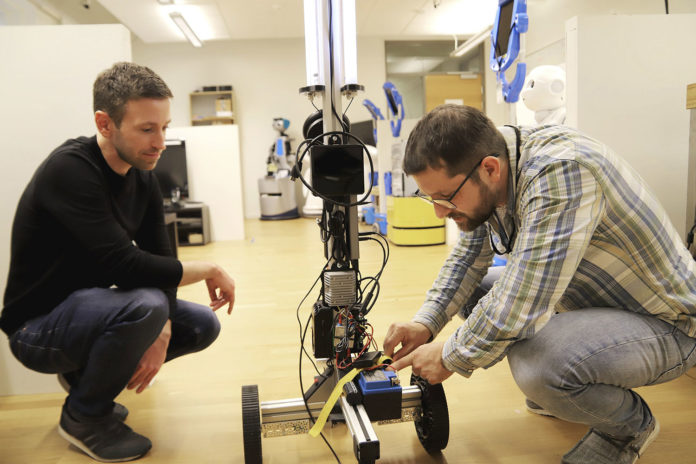To prevent the spread of the coronavirus inside hospitals and other public places, it is essential to keep surfaces disinfected. But the manual cleaning process is dangerous, considering the possibility of getting infected. That is why we have seen several autonomous disinfection robots amid the pandemic. They have set new standards for fast, automated, and safe disinfection and irreplaceable medical assistants. The remote robots could also save money on slow and expensive cleaning services.
Now, researchers at Örebro University are developing an open-source and easy-to-build disinfection robot. The cleaning robot is being developed through AI.MEE project sp00tn1k-clean. Researchers André Potenza and Andrey Kiselev at AASS (Centre for Applied Autonomous Sensor Systems) are collaborating on the development of the robot.
Their goal is to provide an open-source and easy-to-build robotic solution that can be rapidly deployed when needed. Most components can be bought at a technology retail store; others are specifically designed for quick and affordable manufacturing using consumer-grade 3D printers and eco-friendly materials, Örebro University writes in a press release. It is not clear what these components would cost to acquire.
The cleaning robot is a so-called telepresence robot that uses UV-C light to kill viruses, bacteria, and other microorganisms that can cause diseases. It is connected to a wireless network and can be controlled remotely via a computer or mobile phone. The robot is intended for use in hospitals and similar environments requiring disinfection.
“Since UV-C light is harmful to all organisms including humans, a robot equipped with these lamps and our software has the advantage that it doesn’t require the physical presence of humans in the disinfection process,” says André Potenza.
The robot can work fully autonomously or be remotely teleoperated using a collection of sensors and cameras. During a demonstration show at Teknikhuset at Örebro University, the robot had ordinary fluorescent tubes since UV-C radiation is harmful.
Researchers hope that the robot can be used in different types of environments. “The software that we develop is at the core of our expertise in telepresence robotics and the result of many years of research,” Andrey Kiselev says.
